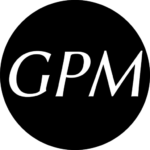Across Modes, Across Disciplines
Findings from a Survey-Based Study of Faculty and Students

Introduction
"I want to make the case that it is time to promote the essay to 'dominant genre emeritus,' to retire it as our main (and sometimes our only) mode for student to develop the intellectual abilities and writing practices we hope they will. Cultural relevance, the speed of technological change and the impact of technological change on communication practices, and the narrow bandwidth of what the essay enables us to do in this expanded communication landscape demand that we bring a richer array of writing and communication practices to use in its place."
(Banks, 2016, p. 179)
"[T]he whole problem of scientific communication in a nutshell: Scientific results today are as often as not found with the help of computers. That’s because the ideas are complex, dynamic, hard to grab ahold of in your mind’s eye. And yet by far the most popular tool we have for communicating these results is the PDF—literally a simulation of a piece of paper. Maybe we can do better."
"[A]dvances in social media and other composing technologies and distribution channels have engendered a workplace in which writers are not tasked with 'writing' as it is typically taught in the classroom—where students are asked to produce complete documents through a process that begins with invention and drafting and extends through revision and delivery. Rather... many writers actually act as multimodal editors—people who work with myriad modes of content."
(Lauer & Brumberger, 2019, p. 637)
The timeline above, punctuated by authors with very different concerns and audiences, is meant to quickly convey the multiplying and accelerating calls to expand models and practices of writing beyond the academic essay to account for, apparently, the reality of composition “in the wild” (Soliday, 2011), which has evolved in academic and professional contexts as a result of changes in the technological environment. Most of these calls intensify and narrow arguments made by pioneers in the field of computers and writing that composition pedagogy and research risked becoming “increasingly irrelevant” (Selfe, 2004, p. 72) unless they addressed the “tectonic change” (Yancey, 2004, p. 298) literate culture was experiencing. In recent years, the field of writing studies seems to be achieving consensus around the idea that the alphabetic academic essay should be, if not abandoned entirely, then at least demoted from its traditional role as the exclusive standard and focus of literacy instruction.
Many of these arguments for multimodal composition becoming part of the curriculum have centered on first-year composition (FYC) classrooms. They have emerged from a couple of main exigencies. One of these exigencies, elaborated by Banks (2016) in the article quoted above, is the imperative to recognize the multiple literacies that diverse students bring to college classrooms from worlds more rich, authentic, and expansive than the disciplined communicative practices of the academy. Another exigence is the responsibility of educators to prepare students with “a full quiver of semiotic modes from which to select” (Selfe, 2009, p. 645) the relevant means of persuasion to meet the ever-changing demands of a rapidly globalizing and digitizing world. This is the argument advanced by Lauer and Brumberger (quoted above)—since writing in the workplace can no longer be said to resemble the writing assigned in schools, our curricular paradigm must be revised.
But one of FYC’s other explicit or implied exigencies, one that is often imagined to conflict with the two others described above, is to “prepare students to write the genres of the academy” (Wardle, 2009, p. 778). Not everyone sees multimodality as separate from writing at the university, though. A number of scholars of writing in the disciplines as well as technical and scientific communication (whose research is summarized more thoroughly in the following section) have suggested that multimodal composition is in fact quite central to the work of many academic disciplines. Some have gone so far as to say that the essay is on the verge of being pushed aside in favor of other research genres. Somers (2018), for instance, writing for The Atlantic, declares dramatically that “the scientific paper is obsolete,” soon to be replaced by computational notebooks capable of dynamically crunching numbers and representing the visual thinking researchers in STEM fields rely on. Somers also equivocates, though, noting that similar pronouncements have been made for decades while in reality scientific “papers” seem to have changed little besides the fact that they are now generally accessible as PDFs online.

How important, and how prevalent, multimodal composition is in the academic disciplines is a question that has only occasionally been empirically addressed by the literature. It is a question that has consequence not only for FYC curricula, positioned as they often are as a precursor to “advanced” or disciplinary academic writing. It also matters greatly to writing across the curriculum (WAC) programs, which are tasked with not only supporting writing faculty and students across campus but also often for shaping the parameters of what institutions consider “writing” to be.
Through broad surveys of faculty and students at a large, public land-grant university, this chapter takes up the specific questions of how important multimodal composition is to the academic disciplines, how common multimodal composition is across the university, and what kinds of multimodal compositions are being produced and for what purposes. Findings support some of the assumptions the field of writing studies has been making regarding multimodal composition for some time—for example, that digital technologies are, incrementally, changing the nature of work produced in the university—and also also provoke new questions and avenues for inquiry.
© Gabriel Morrison, 2021

